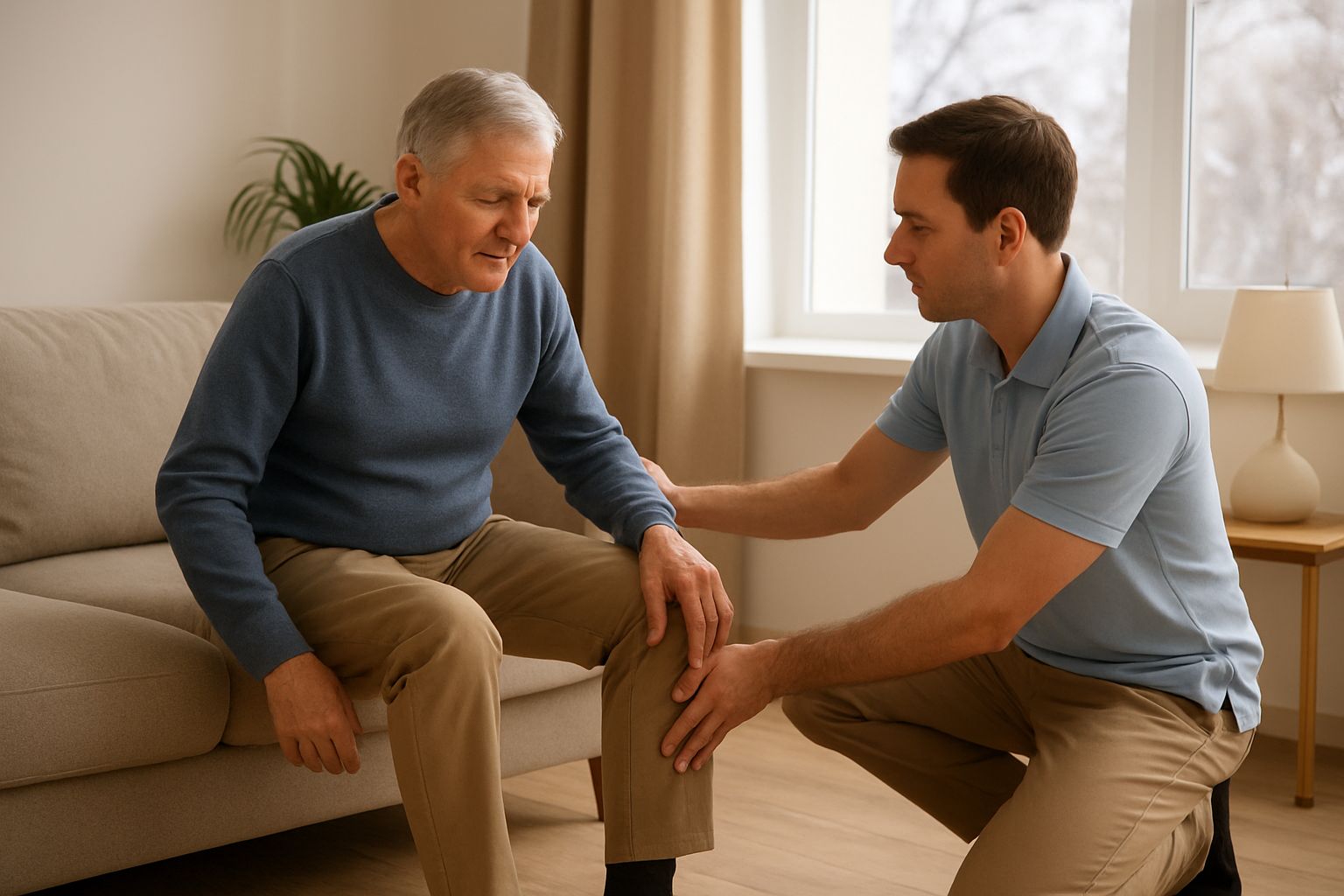Why Seniors Lose Strength Faster in Winter — and How Physical Therapy Helps Maintain Mobility
Winter slows everyone down, but for seniors, the seasonal shift can have a much bigger impact.
Shorter days, colder temperatures, and reduced activity often lead to noticeable changes in strength, endurance, and balance — sometimes in just a few weeks.
The good news: With the right plan, you can stay strong and mobile all winter long.
Here’s why the decline happens, and what you can do to prevent it.
Why Winter Accelerates Strength Loss in Older Adults
1. Less Physical Activity
Cold weather keeps many seniors indoors.
With fewer walks, fewer errands, and fewer daily steps, muscles lose strength quickly — especially the legs and core.
Muscle loss (sarcopenia) accelerates when activity drops, making it harder to:
- climb stairs
- get out of chairs
- maintain balance
- walk long distances
2. Increased Joint Stiffness
Cold temperatures reduce blood flow and make joints feel tighter.
For seniors with arthritis, Parkinson’s disease, or general mobility challenges, this means movements become:
- slower
- more painful
- more effortful
Stiffness → less movement → more stiffness.
It becomes a cycle unless broken with the right exercises.
3. Reduced Sunlight and Vitamin D Levels
Shorter days = lower vitamin D exposure.
Vitamin D is linked to muscle function, bone health, and energy.
Low levels contribute to weakness and fatigue.
External resource:
NIH Fact Sheet: Vitamin D & Muscle Function
4. Fatigue and Reduced Motivation
Cold weather and gloomy days can impact mood.
For some older adults, this means:
- less motivation to exercise
- fewer social activities
- increased time sitting or resting
All of which accelerate deconditioning.
5. More Time Indoors = More Sitting
During winter, many seniors spend significantly more hours sitting.
This leads to:
- weakened glutes
- weaker postural muscles
- shorter stride length
- worse balance
If standing up from a chair or getting out of bed feels harder lately, winter inactivity may be the cause.
How Physical Therapy Helps Maintain Strength During Winter
Staying strong doesn’t require a gym, perfect weather, or long workouts.
A physical therapist can design a plan built around your needs, your home, and your goals.
Here’s how therapy helps:
1. Targeted Strength Training
Customized exercises to strengthen:
- core
- hips
- thighs
- ankles
- postural stabilizers
These muscle groups are essential for safe walking and fall prevention.
Explore our Gait & Balance Therapy Programs to build strength that supports everyday movement.
2. Improving Flexibility and Joint Mobility
Therapists guide seniors through movements that ease stiffness and increase range of motion — especially after periods of inactivity.
This helps break the winter stiffness cycle.
3. Boosting Balance and Reaction Time
Indoor exercises can significantly improve balance, coordination, and stepping strategy — even without long walks outside.
For seniors with Parkinson’s, our Parkinson’s Wellness Center includes specialized training for freezing, posture, and fall prevention.
4. Safe, Indoor-Friendly Exercise Routines
A good PT plan includes movements that can be done safely at home, such as:
- seated or standing strengthening
- indoor walking drills
- resistance band routines
- dual-task balance exercises
- stretching sequences
These programs keep seniors active even during the worst winter days.
5. Preventing Winter-Related Falls
Strength loss and balance changes make falls more likely.
Physical therapy focuses on:
- fall-proofing strategies
- safe gait mechanics
- improving confidence on uneven or icy surfaces
- assistive device training if needed
If fall risk is a concern, learn more about our Parkinson’s Disease Treatment Services.
How Seniors Can Stay Strong at Home This Winter
Here are simple steps anyone can start immediately:
- Stand up and sit down 5–10 times every few hours
- Stretch your calves, wrists, and shoulders daily
- Walk indoors for 5–10 minutes at a time
- Use resistance bands for light strengthening
- Keep lights bright to reduce fall risk
- Schedule movement breaks instead of long sitting periods
Small habits add up fast.
When to Seek Professional Help
Contact a physical therapist if you notice:
- increased weakness
- stiffness that doesn’t improve
- more difficulty getting out of chairs
- slower walking
- more unsteadiness indoors
- fear of falling
Early support prevents long-term mobility decline.
Stay Strong All Winter With Synaptic Rehabilitation
Winter doesn’t have to slow you down.
With the right plan, you can stay active, strong, and confident — no matter how cold it gets outside.
Our specialists create personalized winter-strength programs for seniors, individuals with Parkinson’s, and anyone facing mobility challenges.
📍 1200 Route 22 East, Suite 4, Bridgewater, NJ 08807
📞 908-801-6425
🌐 https://synapticrehab.com/
Steven Cheung, DPT
Steven is the founder and lead physical therapist at SYNAPTIC Rehabilitation. He earned a BS in Exercise Science Applied Kinesiology from Rutgers University in New Brunswick, NJ and his Doctorate degree from American International College in Springfield, MA. Steven specializes in movement disorders such as Parkinson’s disease and many other neurological disorders. Outside of practicing physical therapy Steven enjoys time with his wife, running, and staying active.

